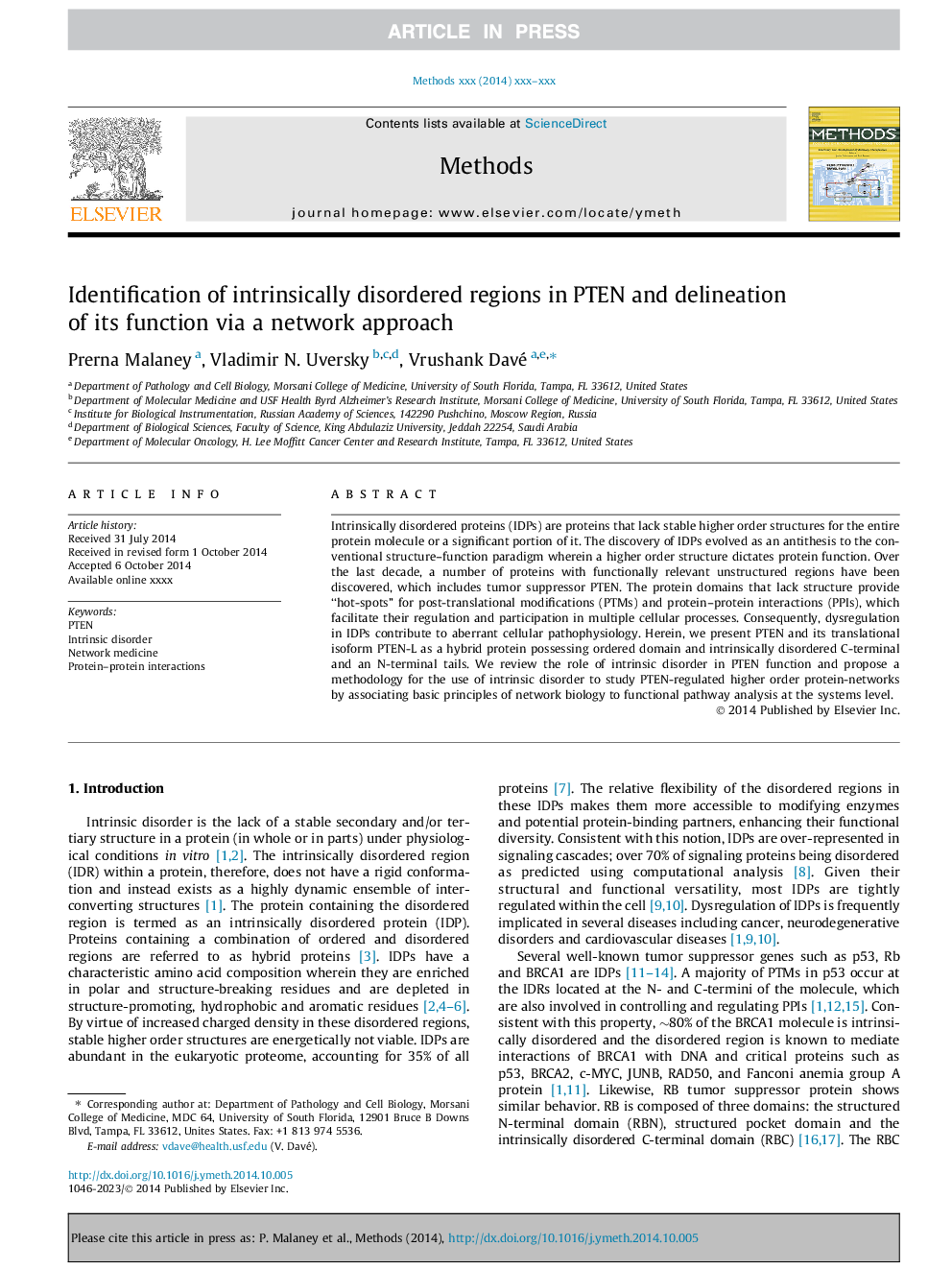| Article ID | Journal | Published Year | Pages | File Type |
|---|---|---|---|---|
| 8340615 | Methods | 2015 | 6 Pages |
Abstract
Intrinsically disordered proteins (IDPs) are proteins that lack stable higher order structures for the entire protein molecule or a significant portion of it. The discovery of IDPs evolved as an antithesis to the conventional structure-function paradigm wherein a higher order structure dictates protein function. Over the last decade, a number of proteins with functionally relevant unstructured regions have been discovered, which includes tumor suppressor PTEN. The protein domains that lack structure provide “hot-spots” for post-translational modifications (PTMs) and protein-protein interactions (PPIs), which facilitate their regulation and participation in multiple cellular processes. Consequently, dysregulation in IDPs contribute to aberrant cellular pathophysiology. Herein, we present PTEN and its translational isoform PTEN-L as a hybrid protein possessing ordered domain and intrinsically disordered C-terminal and an N-terminal tails. We review the role of intrinsic disorder in PTEN function and propose a methodology for the use of intrinsic disorder to study PTEN-regulated higher order protein-networks by associating basic principles of network biology to functional pathway analysis at the systems level.
Related Topics
Life Sciences
Biochemistry, Genetics and Molecular Biology
Biochemistry
Authors
Prerna Malaney, Vladimir N. Uversky, Vrushank Davé,
